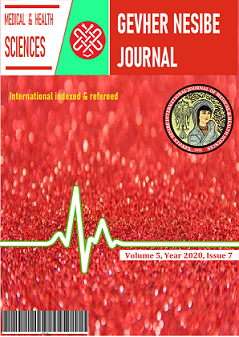Outcomes Of Percutaneous Endoscopic Versus Surgical Gastrostomy In Patients With Chronic Disease
DOI:
https://doi.org/10.46648/gnj.84Keywords:
Nutrition, Surgical gastrostomy, Endoscopic gastrostomyAbstract
Objective: The prime indication for parenteral and enteral nutrition is provided to patients who have oral intake deficiencies for nutritional support. Percutaneous endoscopic gastrostomy (PEG) has become the gold standard method in the case of long-term enteral nutrition in most patients, given its cost-effectiveness and ease of use. However, there are also patients who require surgical gastrostomy due to technical reasons or patient-related factors. This study, data on demographic characteristics, follow-up and post-procedure complications of patients who underwent surgical gastrostomy and PEG were presented. Methods: Patients who underwent PEG and Stamm gastrostomy for enteral feeding between January 2018 and December 2018 at İstanbul Medeniyet University Göztepe Training and Research Hospital Department of General Surgery were evaluated retrospectively. The patients in the two groups were compared in terms of complications and mortality during or after the procedure. The most frequent complication associated with PEG and surgical gastrostomy was superficial surgical site infection. Procedure-related mortality was not detected in any patients. During the one-year follow-up period, 38 patients died due to primary disease. Results: Within the study, 72 patients underwent gastrostomy. Ten of 72 patients were not suitable for percutaneous endoscopic gastrostomy technique, surgical gastrostomy was applied to these patients. The mean age was 71,3(20-94) years. Thirty-five (%48,6) of the patients were male and 37 (%51,4) were female. Complications were seen in 18 (25%) patients, and 15 (24.2%) of these have occurred in the PEG group and 3 (30%) of these occurred in the surgical gastrostomy group. Conclusion: Compared with SG, PEG has become the preferred method in enteral nutrition due to its cost-effectiveness, low morbidity rate and ease of use
Downloads
Published
How to Cite
Issue
Section
License

This work is licensed under a Creative Commons Attribution-NonCommercial 4.0 International License.


